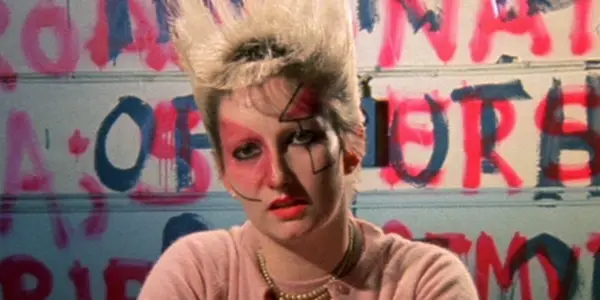Anarchic Cinema: An Introduction To Embracing The Inner Chaos Of Movies

Matthew Roe is a director, writer, producer, film critic, theorist…
Now, what might this diatribe be with a title like that? Well, to reasonably break it down, a essential element to this discussion first needs to be defined: art. Art is a very simple word to pronounce, though one of the hardest ideas to pin down. The more encompassing the word, the more ambiguous its meaning. Traditionally, art encompasses the combination of skill and creativity which produce work appreciated for aesthetic or emotional resonance. At least, that’s what a grade school art history book might say. Art as a concept should not be regulated to the simple parameters involving the products of creativity, and more encompassing the full breadth of the human experience.
Now, how does any of this little rambling thus far relate to movies? Well, most importantly, filmmaking is one of the most unique experiences that humans can engage in as not only does it combine almost every existing traditional art form and communication into one, but also a brand new phonetic and visual language is produced which can be understood universally across all preexisting cultural and social barriers. All varieties of human expression has now been given a tangible face. For this series of articles, the primary focus will be chaos as art, or artistic anarchy.
Artistic Anarchy: What Is It?
Anarchy, by its dictionary definition, is classified as a state of disorder due to absence or non-recognition of authority. But applying this idea to art is often left to how the artist treats the cultural and social world from which they spring.

What I mean by this is that filmmaking is dynamic. Every film screams to the audience in many different tones, tongues, and different styles, moods, and a different attitude to that of the one coming before and after it. If we go beyond the typical groaning and whining that originality is not alive in art today, the reaction to this ‘unoriginality’ in it of itself is an original idea.
The original idea is the depth of individual perspective. Though it might be a retread or a remake of an idea, individual perspective is molded and expressed in a reactionary form. To elaborate, a film can push the audience into places mentally that are uncomfortable and challenging, or to insulate them in areas that are cheery and safe. Regardless where it lands on your individual spectrum, this is a reaction to the film. This relationship with the audience is a very personal one as film is usually the most direct reaction to the culture surrounding its creation and exhibition.
How Is This Rant Relevant?
As a result of the constant tug-of-war between the reactionary worlds of the film and the audience, the artform constantly changes and evolves. Mass taste dictate the winners and losers of each era in film, though this undoubtedly changes with the passage of time and the revisions of each society. Through technical skill and proficiency on set and in the editing room, the technology that has made film not only accessible to almost every person, but has also democratized the playing field for distribution and exhibition. This opens up so many avenues to approaching moviemaking that the possibilities are actually grossly underappreciated and nearly impossible to completely comprehend.

However, this current era in filmmaking is the epitome of a singular idea: We forget that as art changes, the artist must change with it.
Let us say that art is indeed the combined effort of craft and imagination, which is molded by each artist’s interaction with their education, relationships and ultimately their perspective of the world and themselves. With such a powerful combination of character traits and modes of expression, art by its very existence (in all forms, but especially in filmmaking) must stress the limits, pushing the form, the creator and the audience to a point of no return and then to charge beyond it.
So What Films Embody Artistic Anarchy?
We’ve arrived at the final purpose of this series, to find out exactly how this concept has been and can be applied in practice. What movies and filmmakers are the epitome of artistic anarchy? As our minds evolve, as our rationale changes, so, by the laws of nature and culture, should the medium change. And these evolutions, some obvious and felt the world over, to those more nuanced and complex, shall be discussed and debated in length in the following installments.

As we parse the minds and movies that have come to embody the true chaos that we as a species exist in perpetuity, understand that filmmaking needs to continue to mature. This is not a movement, nor (necessarily) a political or social statement told through film. It is the natural modus operandi of the medium, and it exists in some of the most unlikely of places. Welcome to Anarchic Cinema.
What films do you think can be considered Anarchic Cinema? Please share your thoughts in the comments below!
Does content like this matter to you?
Become a Member and support film journalism. Unlock access to all of Film Inquiry`s great articles. Join a community of like-minded readers who are passionate about cinema - get access to our private members Network, give back to independent filmmakers, and more.
Matthew Roe is a director, writer, producer, film critic, theorist and historian, with over 12 years experience producing film, video, television, and online content. He currently writes DVD/Blu-ray reviews for Under the Radar Magazine, movie reviews for Film Threat, and contributes features to the Anime News Network. He has won two Vollie Television Awards, an Honorable Mention at the LA Movie Awards, and is a Cult Critic Award Finalist. Matthew is a member of the Political Film Society and the Large Association of Movie Blogs.













